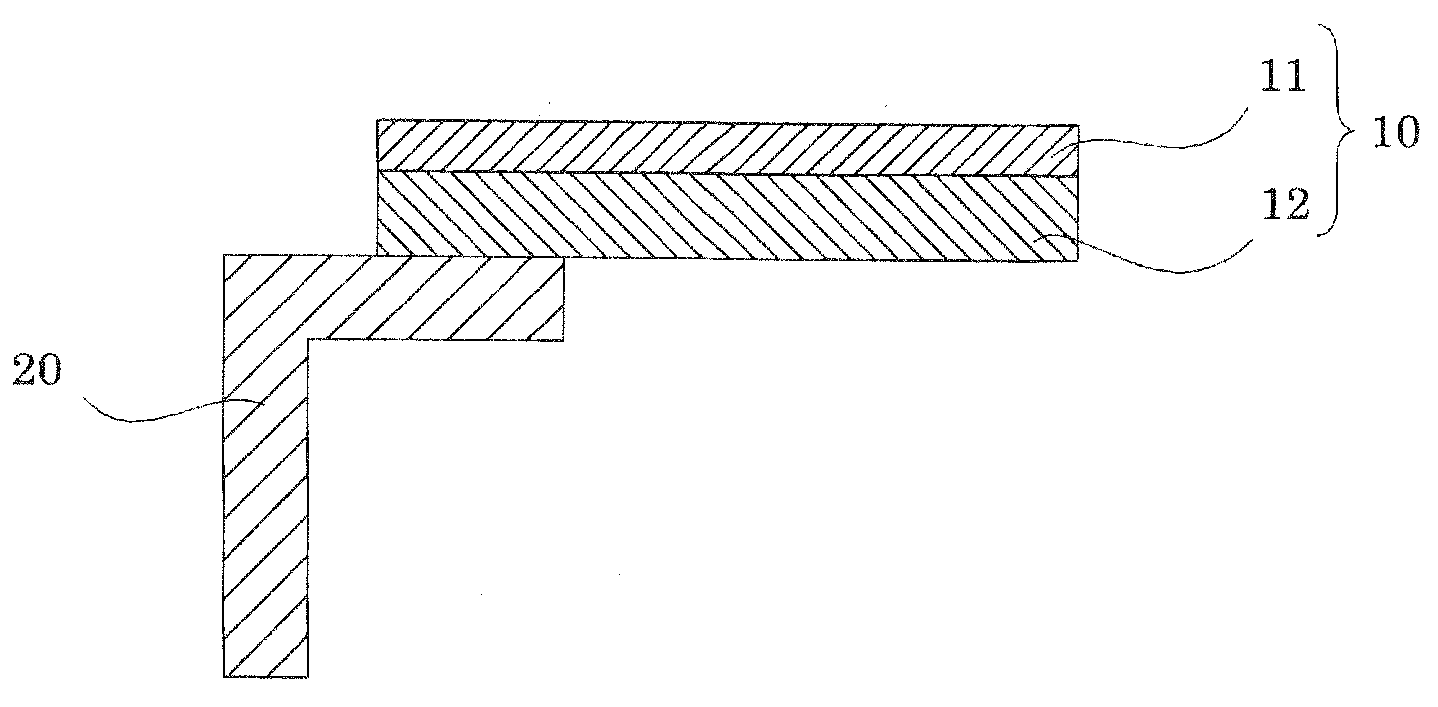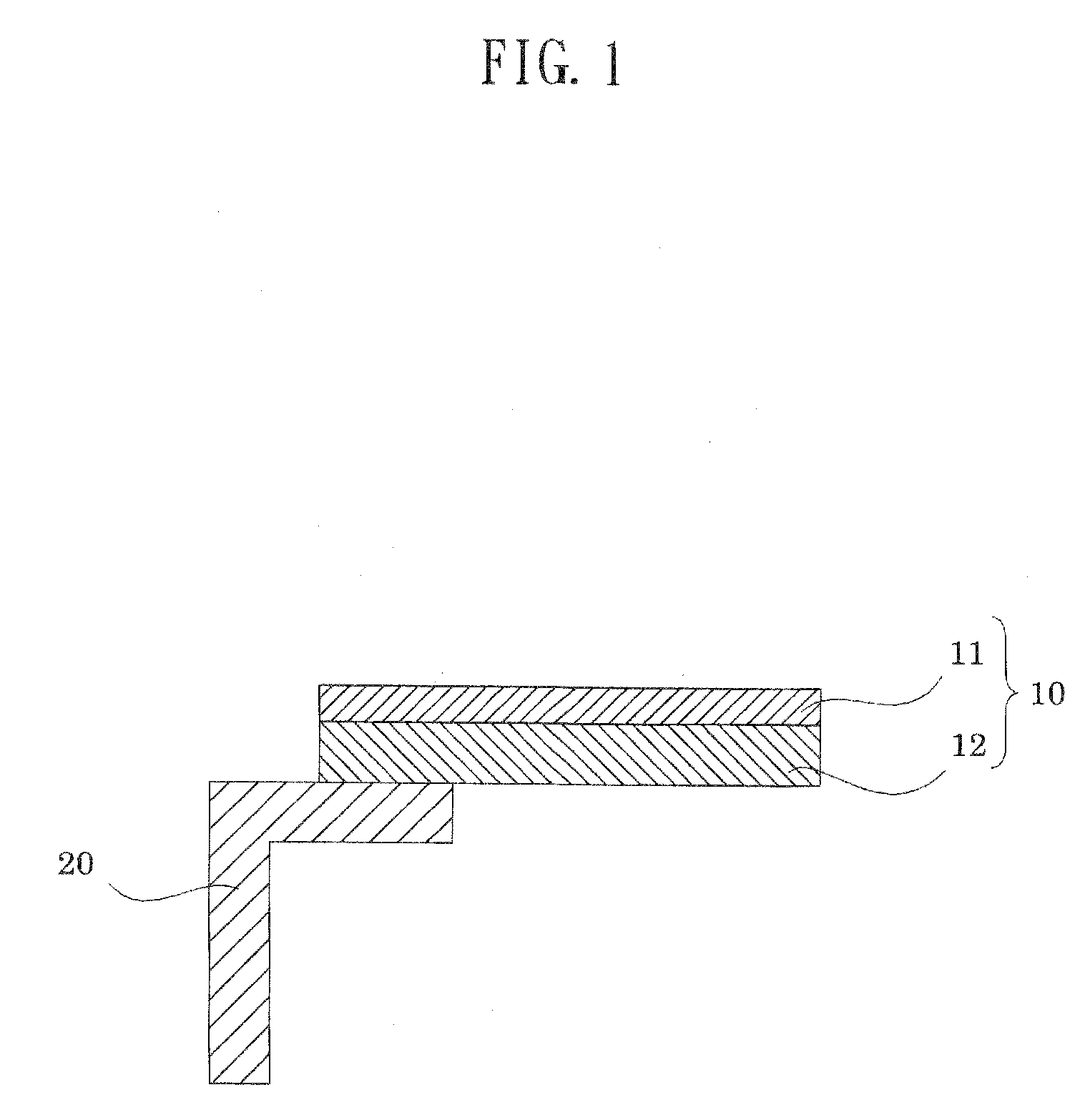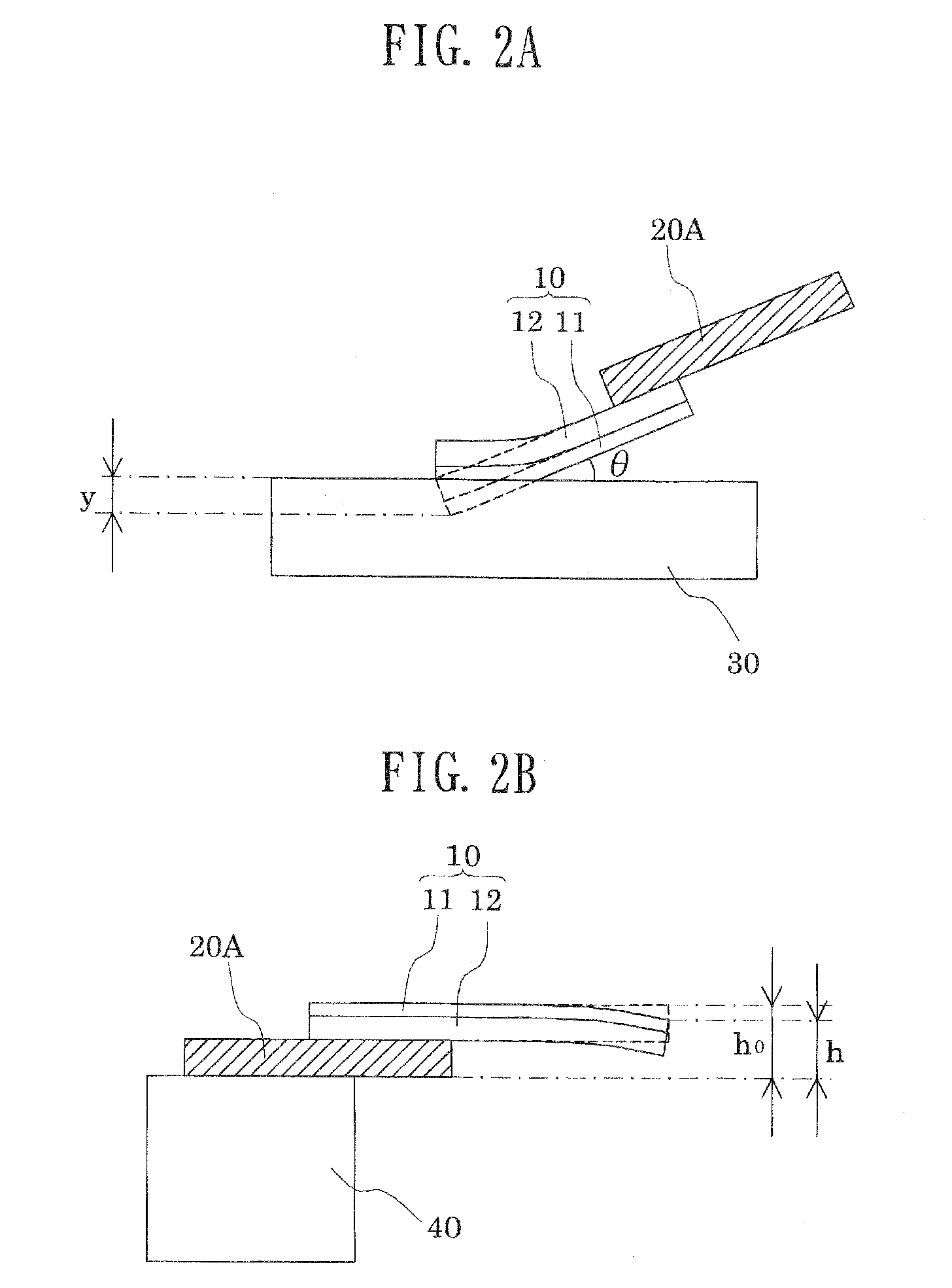Cleaning blade member
a cleaning blade and blade technology, applied in the field of cleaning blade members, can solve the problems of edge drooping, surface drooping of cleaning blades, and unsatisfactory wear resistance and edge drooping resistance, and achieve excellent wear resistan
- Summary
- Abstract
- Description
- Claims
- Application Information
AI Technical Summary
Benefits of technology
Problems solved by technology
Method used
Image
Examples
example 1
[0068]The materials for forming polyurethane D and those for forming polyurethane A were sequentially fed to a centrifugal molding machine in predetermined amounts, and centrifugal casting was performed, whereby a cleaning blade member having a cleaning layer (thickness: 0.5 mm) made of polyurethane A and an elastic layer (thickness: 1.5 mm) made of polyurethane D was produced. The cleaning blade member was cut into pieces, and each piece was bonded to a metal plate (support member), to thereby form a cleaning blade of Example 1.
example 2
[0069]The procedure of Example 1 was repeated, except that the materials for forming polyurethane E and those for forming polyurethane B were sequentially fed to a centrifugal molding machine in predetermined amounts, and centrifugal casting was performed, whereby a cleaning blade member having a cleaning layer (thickness: 0.5 mm) made of polyurethane B and an elastic layer (thickness: 1.5 mm) made of polyurethane E was produced, to thereby form a cleaning blade of Example 2.
example 3
[0070]The procedure of Example 1 was repeated, except that the materials for forming polyurethane F and those for forming polyurethane C were sequentially fed to a centrifugal molding machine in predetermined amounts, and centrifugal casting was performed, whereby a cleaning blade member having a cleaning layer (thickness: 0.5 mm) made of polyurethane C and an elastic layer (thickness: 1.5 mm) made of polyurethane F was produced, to thereby form a cleaning blade of Example 3.
PUM
 Login to View More
Login to View More Abstract
Description
Claims
Application Information
 Login to View More
Login to View More - R&D
- Intellectual Property
- Life Sciences
- Materials
- Tech Scout
- Unparalleled Data Quality
- Higher Quality Content
- 60% Fewer Hallucinations
Browse by: Latest US Patents, China's latest patents, Technical Efficacy Thesaurus, Application Domain, Technology Topic, Popular Technical Reports.
© 2025 PatSnap. All rights reserved.Legal|Privacy policy|Modern Slavery Act Transparency Statement|Sitemap|About US| Contact US: help@patsnap.com



